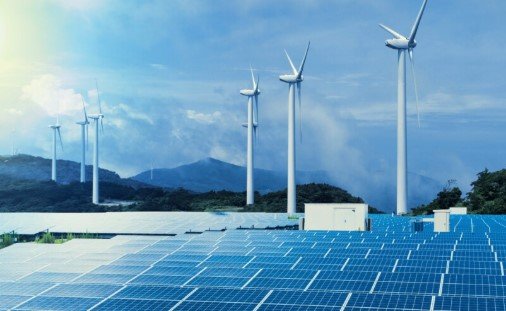Hybrid Solar–Wind Solutions for African Utility Grids

As Africa pursues a future of sustainable, reliable, and affordable electricity, hybrid solar–wind energy systems are emerging as a pragmatic and compelling solution. Combining solar photovoltaic (PV) and wind turbines into integrated systems brings enhanced performance, improved grid stability, and economic benefits compared to standalone installations. This article explores the aspirations and challenges of deploying hybrid solar–wind systems across African utility grids, along with real-world applications, policy enablers, and a roadmap for scaling up this transformative approach. You can learn more at https://bterenewables.com.
Why Hybrid Solar–Wind?
Complementarity of Resources
Africa experiences abundant solar insolation most days of the year, while seasonal or diurnal wind patterns complement solar production. When solar output dips, during night hours or heavy cloud cover, winds often pick up, and vice versa. This energy complementarity improves reliability and smooths the supply curve.
Improved Grid Stability
Hybrid systems deliver more consistent power output with fewer fluctuations. They help utilities maintain frequency and voltage stability, especially valuable in many African grids, which suffer from intermittency due to variable renewables.
Cost Synergies and Shared Infrastructure
Deploying solar and wind installations together enables cost savings in land use, grid interconnection infrastructure, operations & maintenance, and energy storage. Shared substations, access roads, and monitoring systems reduce overall project costs.
Optimized Storage Needs
Storage is essential for high renewable penetration. Hybrid renewables lessen short-term storage requirements: when solar wanes, wind may fill the gap, reducing the size and cost of batteries or pumped hydro facilities.
Lower Levelized Costs of Energy (LCOE)
By improving capacity factors and leveraging complementarities, hybrid systems often yield a lower LCOE than separate solar- or wind-only plants. For utilities under budget constraints, this translates into more affordable, dispatchable green power.
African Context: Opportunities & Challenges
Resource Richness Across Regions
- Northern and Eastern Africa enjoy strong wind corridors, such as onshore/hybrid wind farms in Morocco, Egypt, and Kenya’s Rift Valley, along with exceptional solar potential.
- Sub-Saharan Africa sees viable wind conditions in coastal and elevated regions, paired with solar resources across vast sunny areas.
Grid Constraints
Many African utilities face limited transmission capacity, aging networks, and frequent outages. Introducing hybrid systems requires strategic grid planning, investments in reinforcement, and smart forecasting tools.
Financial & Market Barriers
Initial capital costs, currency risks, limited financing mechanisms, and underdeveloped power markets hinder investments. Policy uncertainty and slow permitting processes further dampen investor confidence.
Technical Capacity
Hybrid systems demand integrated design skills, flexible grid management, and maintenance expertise. Training and technical support, especially in remote regions, are crucial for long-term success.
Environmental and Social Considerations
Land-use conflicts, community engagement, and ecological impacts (e.g., bird migration, habitat disruption) must be addressed through early stakeholder consultations and environmental assessments.
Strategic Deployment Pathways
Utility-Scale Hybrid Parks
Develop large-scale hybrid parks combining solar PV and wind turbines, co-located in regions with complementary resource patterns. These parks can be utility-grid connected, leveraging economies of scale and centralized control systems.
Mini-grids & Off-grid Hybrid Systems
Remote communities without grid access benefit from hybrid mini-grids, blending solar, wind, and battery storage. These systems deliver reliable, clean power and can scale to micro-grids, fostering electrification.
Retrofitting Existing Solar or Wind Sites
Existing renewable sites may be retrofitted by adding the complementary resource, solar to wind-only sites, or vice versa, to boost output and energy availability, using shared civil and electrical infrastructure.
Building Resilience with Storage Integration
Pairing hybrids with storage systems enhances dispatchability, supports peak demand, and supplies ancillary services such as frequency response. Batteries or pumped hydro add resilience during prolonged low renewable periods.
Digital Control and Forecasting Tools
Sophisticated SCADA platforms, weather forecasting models, and smart grid controls enable utilities to optimize hybrid plant output, manage ramp rates, and maintain grid balance cost-efficiently.
Policy & Financing Enablers
Clear Regulatory Frameworks
Africa needs transparent frameworks to support hybrids: streamlined permitting, well-defined grid interconnection standards, and rules for energy dispatch, prioritizing clean energy.
Hybrid-Friendly Procurement Programs
Utilities and governments can explicitly solicit hybrid bids in auction rounds, offering favorable tariff structures and recognizing hybrids’ superior value in dispatchability.
Access to Finance & Risk Mitigation
Development banks, climate funds, and multilateral agencies should de-risk hybrid projects through concessional loans, guarantees, and blended finance schemes, especially for early movers.
Local Capacity Building
Investments in technical training, vocational programs, and local supplier development ensure operational and maintenance capacity for hybrid systems, boosting sustainability and local job creation.
Data-Driven Resource Mapping
Public institutions should support high-resolution solar/wind resource assessments, open data platforms, and forecasting tools to help developers identify optimal hybrid sites.
To Conclude
Hybrid solar–wind solutions offer a powerful and pragmatic avenue for African utility grids to accelerate decarbonization, increase reliability, and lower energy costs. By capitalizing on complementary renewables, optimizing infrastructure, and strengthening supportive policies, African nations can leapfrog traditional energy paradigms and unlock a more resilient and inclusive energy future.
For deeper insights into successful hybrid project designs, financing frameworks, and capacity-building strategies, visit https://bterenewables.com.




